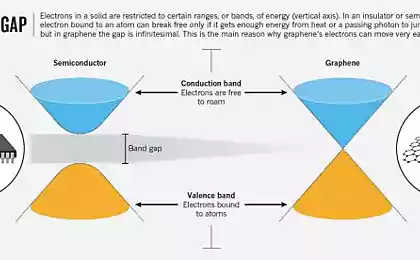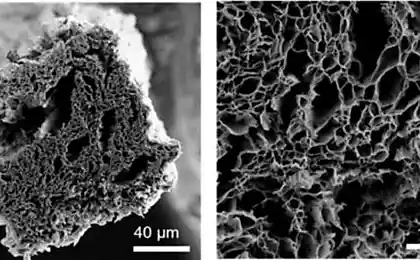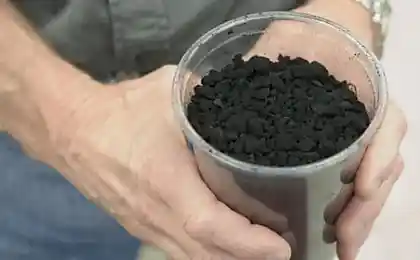475
A solar sail of graphene: reality or fiction?

Graphene, already amazing material with many incredible properties, it turns out, has another quality, which may someday play an important role in space research. Graphene acquires a motor function and is able to move forward when exposed to light!
Interestingly, to this discovery, scientists came quite by accident when conducted a study of the so-called graphene sponges — crumpled between graphene layers with a thickness of one carbon atom. When cutting graphene sponges with a laser beam scientists thought that part of the sponge began to move forward. The researchers decided to conduct an experiment again. What happened writing a scientific magazine New Scientist:
"Scientists put a sponge graphene in a vacuum environment and sent her lasers with different wavelengths and intensities. The result of these manipulations the lasers pushed the pieces of sponge at a distance of 40 centimeters. To consolidate the results of the experiment, the researchers tried to pull the same trick, but using a normal sun rays to sponge with lenses. The experiment was successful."What ultimately can all benefit? According to one of the proposed theories, from graphene it will be possible to build something like a solar sail. Photons of light are known to have a driving force. And they passed this power to any object with which they are confronted. If we consider the results of the experiment with graphene sponges, this force would be sufficient in order to move forward spacecraft (with the appropriate size of the sail, of course).
New Scientist cites another theory scientists:
"Scientists believe that graphene absorbs energy of the laser beam and generates a charge of electrons. In the end the battery level reaches its maximum, and as a result begin to be released excess electrons, which move the sponge in the opposite direction. And although it is not entirely clear why the electrons in this case are not moving randomly, the experiment with graphene sponge has shown that laser causes an electrical pulse that would in turn talk about the correctness of such assumptions".To confirm the new properties and associated property theories, of course, will have to spend more than one experiment. The rationality for the creation of graphene solar sails, too, is controversial. Graphene is known to be very difficult to make. Although the recent development of the MIT may be able to solve this problem. published
P. S. And remember, only by changing their consumption — together we change the world! ©
Source: hi-news.ru























